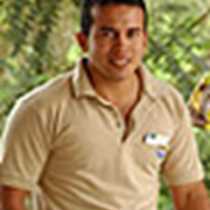Fernandina and Isabela Islands.
The explorers from the National Geographic Endeavour arrived at the western side of the archipelago. Early in the morning we started the expedition in search for cetaceans around this very productive side of the enchanted islands. We did not have to wait long before pilot whales and common dolphins showed up. We must have had about two hundred common dolphins feeding on the small bait fish close to our ship. Along our navigation we also spotted many sea birds soaring close to the water in search of food. What a way to start our day!
We soon arrived at Fernandina Island (the youngest of the Galápagos), where we disembarked, having a dry landing surrounded by mangroves and plenty of very large marine iguanas by the landing spot. Being born in the Galápagos, when I come back to this specific island I always get the impression that I have traveled back in time to see how the Galápagos was before humans colonized this paradise. It is such a privilege to touch a place that had been so untouched, where most of the species we saw were native or endemic. Along the hike, we spotted two Galápagos hawks (the top predator of the Galápagos), and hundreds of marine iguanas, penguins, and cormorants. The terrain was very barren; most of it consisted of young lava flows that had been uplifted by tectonic activity in 1972.
After the hike we snorkeled with plenty of sea turtles, marine iguanas feeding under the ocean, sea lions and a large variety of fish living in these waters full of nutrients and plankton.
During the afternoon we went on a Zodiac ride along the coast of the largest of the Galápagos Islands, the second youngest island known as Isabela. During the ride, we enjoyed the amazing geological formations along the titanic cliffs of the visitor site known as Punta Vicente Roca. This is a resting place for Pacific green sea turtles and we sure saw plenty of them just floating on the surface or on the bottom of the cove. After the Zodiac ride we came back and crossed the equator line, officially become Galápagos shellbacks with an interesting celebration on the bow on the National Geographic Endeavour.




